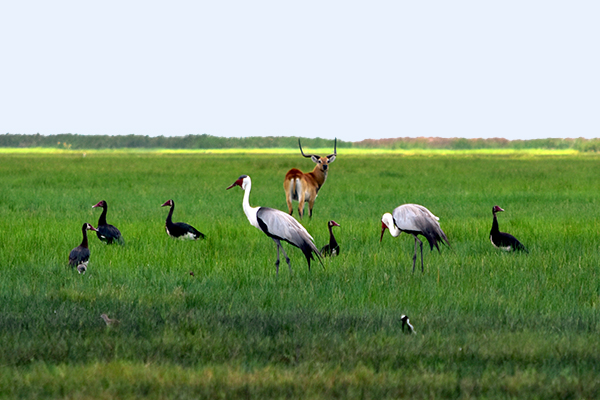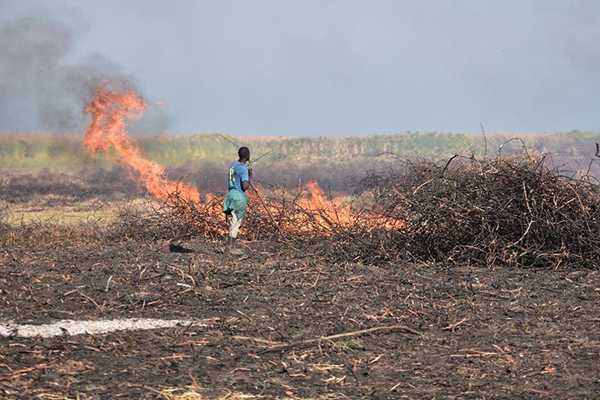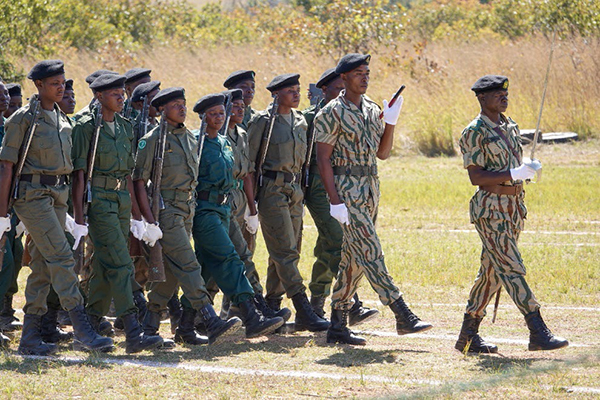
20-Year Agreement Solidifies Decades of Conservation Work in the Kafue Flats
The International Crane Foundation recently signed a 20-year collaborative partnership agreement to help restore and manage Blue Lagoon and Lochinvar National Parks of the Kafue Flats in Zambia, home to the largest population of Endangered Wattled Cranes and Kafue Lechwe antelope.
In addition to supporting a wealth of wildlife and natural resources, the Kafue Flats benefit more than one million people in Zambia through agriculture, livestock grazing, fishing, water supply, power generation and tourism. Local community members will be involved in all aspects of park management, including law enforcement, invasive species control, research and monitoring, and various livelihood initiatives.
“Our motto is A Thriving Wetland for All,” said Mwape Sichilongo, International Crane Foundation’s Southern Africa Floodplain Regional Manager. “We know that a healthy wetland for cranes and other wildlife is also a healthy wetland for people. We are very proud to partner with the seven traditional rulers of the Kafue Flats, who are the custodians of this area. This commitment is more than just conservation. It is about people’s livelihoods, cultural heritage, identity and pride.”
By partnering with local leaders and empowering local communities to lead park management, the partnership aims to create long-term conservation of the Kafue Flats, which will undergo increasing human pressures as the population of Africa grows over the coming decades.
The newly established Kafue Flats Restoration Partnership brings together the International Crane Foundation, the Zambia Department of National Parks and Wildlife and the Worldwide Fund for Nature. The Endangered Wildlife Trust of South Africa and many other key partners are also collaborating in this effort.
“This is one of the most important wetlands in Africa for wildlife and people. We have been actively working in this region for decades and have intensified our efforts during the last two years as we developed this agreement with all of the partners,” said Dr. Rich Beilfuss, President and CEO of the International Crane Foundation.
Seeking to be a worldwide model for engaging communities in protected area conservation, this agreement will focus on managing and restoring 650,000 hectares covering the two national parks and surrounding floodplains of the Kafue Flats. At stake are more than 470 species of birds and many large mammals, including African buffalo, zebra and hippo, that depend on the Kafue Flats. It is the only place in the world where the aquatic Kafue Lechwe antelope can be found.


The partnership is working to develop a comprehensive management plan for the national parks and the surrounding area, to balance restoration with human well-being, and to reduce threats from climate change, water development, fire, illegal harvesting of game meat and fish, and human activity in highly sensitive wildlife habitats. The partnership will also work to demonstrate and communicate the importance of the Kafue Flats ecosystem locally, nationally and globally. It will further strive to improve the field officers’ living and working conditions and create sustainable livelihood opportunities for local community members.
The Kafue Flats is designated a “Wetland of International Importance” under the Ramsar Convention and a Key Biodiversity Area under Birdlife International. It is also Zambia’s first man and biosphere reserve under the United Nations Education, Scientific and Cultural Organization.
